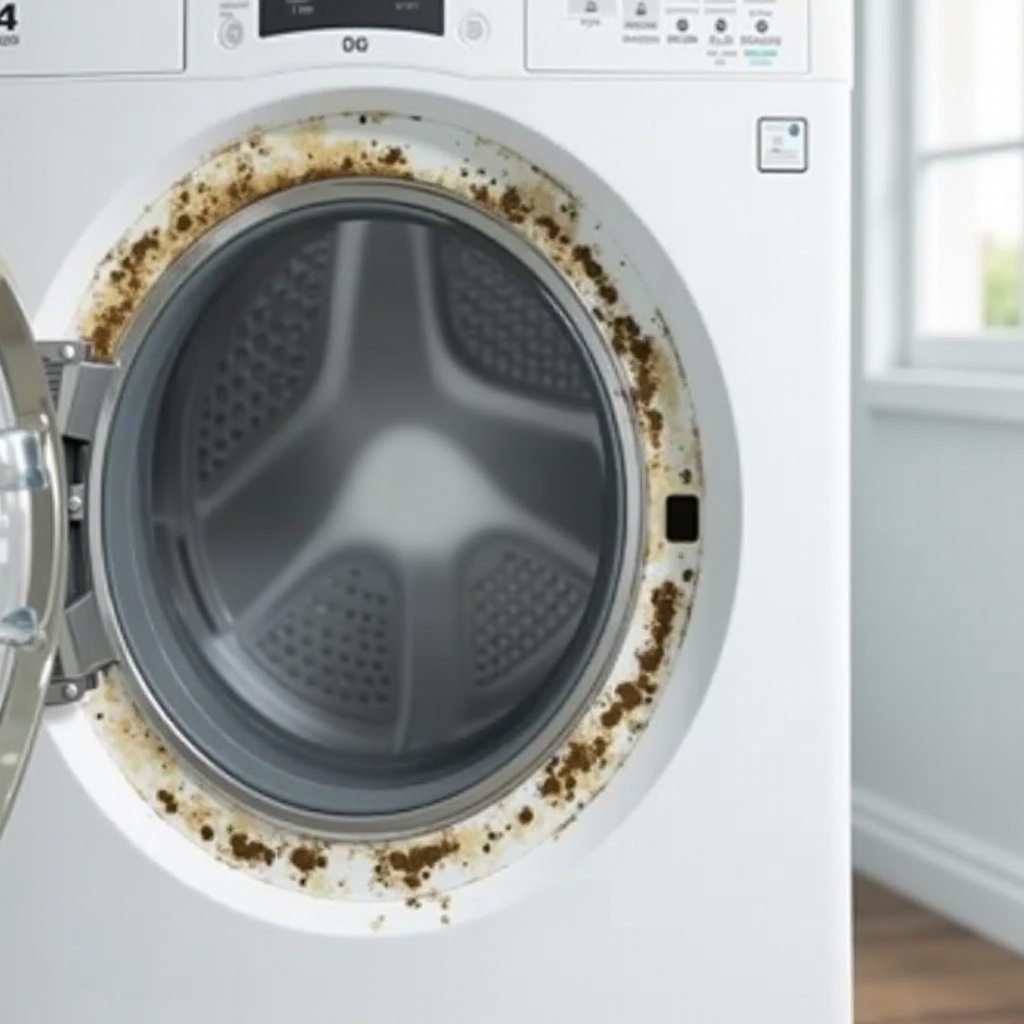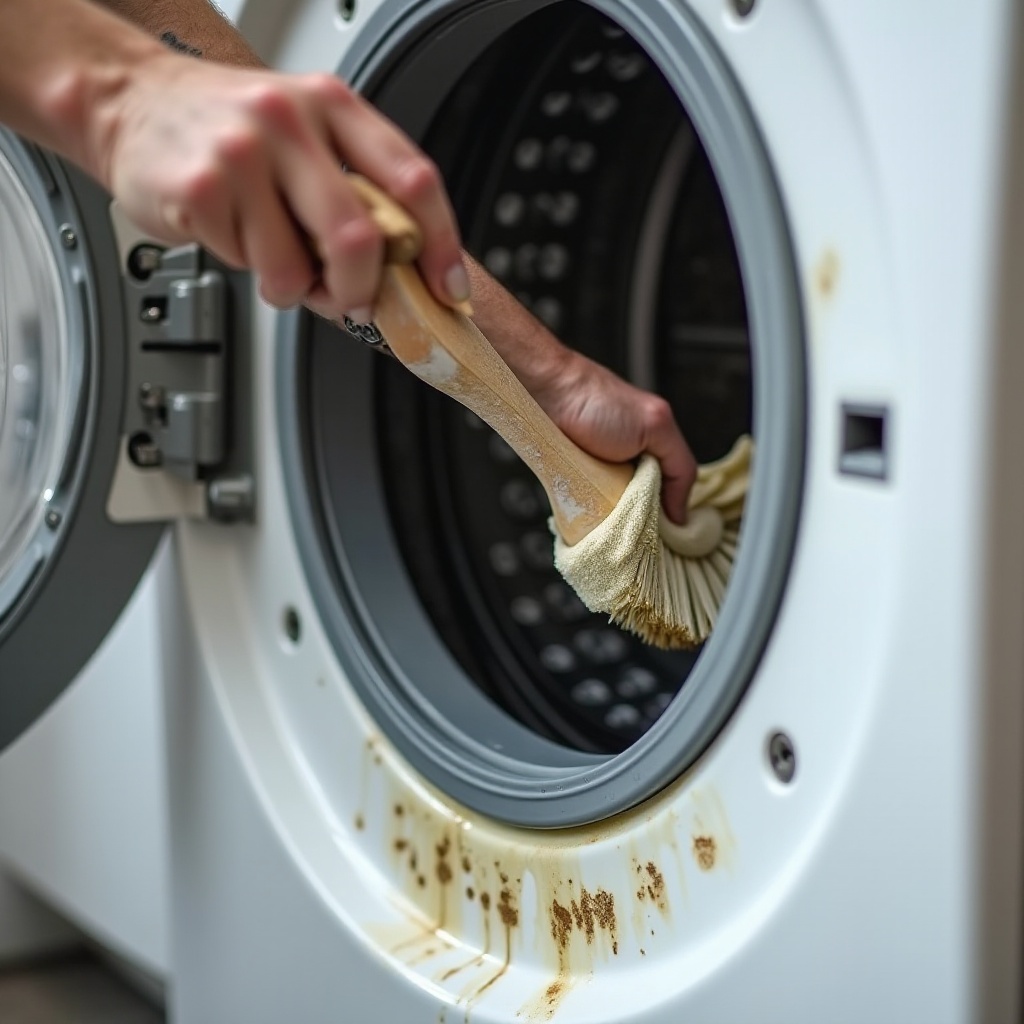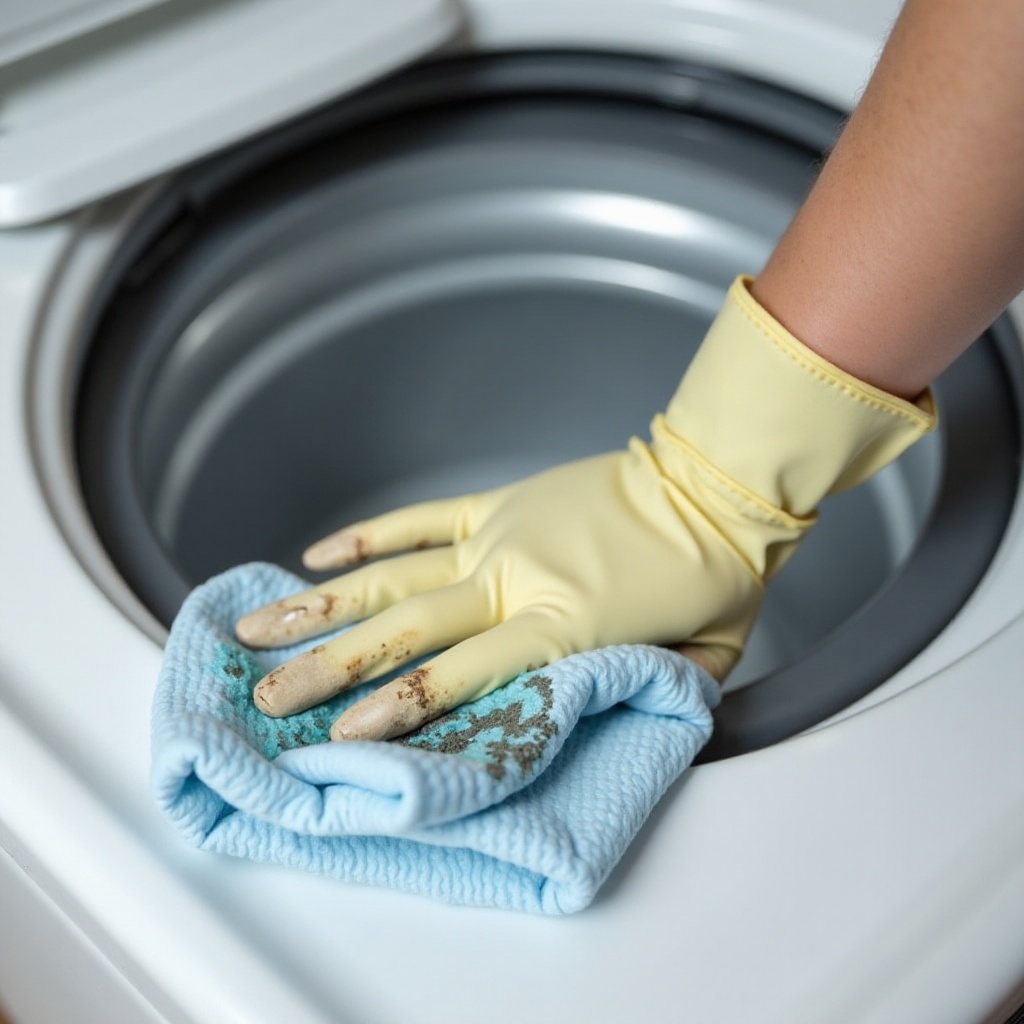Introduction
Mold in a front load washer is a common and frustrating problem for many homeowners. The dark, moist environment of these washers creates the perfect breeding ground for mold and mildew. If you notice a musty smell or visible mold, it's time to take action. In this guide, we'll provide you with effective methods and tips for cleaning and maintaining your front load washer to keep it mold-free and running efficiently.

Understanding Mold in Front Load Washers
Mold thrives in dark, humid environments, making the inside of a front load washer an ideal location. The door's rubber gasket, drum, and detergent drawer are the most common places where mold can grow. Factors such as using too much detergent, infrequent cleaning, and allowing moisture to sit in the machine can exacerbate this problem.
Recognizing the presence of mold is the first step in addressing the issue. Look out for dark spots, a musty smell, or a slimy residue on the gasket. If left untreated, mold can affect the performance of your washer and result in unpleasant odors in your laundry.
Essential Supplies for Cleaning Your Washer
Before diving into the cleaning process, gather the necessary supplies. Having these items on hand will make the task more efficient and effective:
- White vinegar
- Baking soda
- Bleach (optional, but effective for mold removal)
- Soft cloth or microfiber cloth
- A small brush or old toothbrush
- Spray bottle
- Rubber gloves
Now that you have your supplies ready, let's move on to the cleaning process.
Step-by-Step Guide to Cleaning Your Moldy Front Load Washer
Cleaning the Gasket
- Inspect the gasket: Pull back the rubber seal around the door and check for visible mold and mildew.
- Wipe down the gasket: Dampen a soft cloth with white vinegar and thoroughly wipe the gasket, paying close attention to the folds where mold hides.
- Scrub stubborn mold: For tougher spots, use a small brush or old toothbrush with a mixture of white vinegar and baking soda. Scrub gently to avoid damaging the gasket.
- Rinse the gasket: Wipe the gasket with a clean, damp cloth to remove any residue.
Cleaning the Drum and Interior
- Prepare the drum: Sprinkle about 1/2 cup of baking soda directly into the drum.
- Set up a cleaning cycle: Pour 2 cups of white vinegar into the detergent drawer or directly into the drum.
- Run a hot water cycle: Select the hottest and longest cycle available on your machine and run it. The combination of vinegar and baking soda helps to break down mold and eliminate odors.
Cleaning the Dispenser Drawer
- Remove the drawer: Take out the detergent drawer and disassemble any removable parts.
- Soak and scrub: Soak the parts in hot, soapy water and scrub them with a brush to remove any mold and detergent buildup.
- Rinse thoroughly: Rinse all parts under running water and dry them before reassembling and reinserting into the washer.
Running a Cleaning Cycle with Vinegar and Baking Soda
Periodically running a cleaning cycle helps maintain the washer's cleanliness and prevent mold from returning.
- Monthly maintenance: Add 2 cups of vinegar and a 1/4 cup of baking soda to the drum.
- Hot water cycle: Run the washer on the hottest and longest setting to ensure thorough cleaning.
- Wipe down after each use: After every wash, leave the door open to air out the washer and wipe the gasket and drum dry.

Preventative Measures to Keep Mold at Bay
Preventing mold is easier than dealing with an infestation. Implement these tips to maintain a clean and mold-free washer:
Proper Airflow and Ventilation
- Leave the door open: After each use, leave the washer door slightly ajar to allow air circulation and prevent moisture buildup.
- Ventilate the laundry room: Ensure proper ventilation in your laundry area to reduce humidity.
Choosing and Using the Right Detergents
- Use HE detergents: High-efficiency detergents produce fewer suds, reducing the chance of residue build-up.
- Measure detergent carefully: Follow the manufacturer's instructions for the correct amount of detergent.
Regular Maintenance Tips
- Wipe the gasket regularly: Clean the door seal with a damp cloth and vinegar weekly.
- Monthly cleaning cycle: Run a cleaning cycle with vinegar and baking soda once a month.
Troubleshooting Persistent Mold Issues
If mold persists despite regular cleaning and maintenance, consider these steps:
- Run a bleach cycle: Add one cup of bleach to the drum and run a hot water cycle. Bleach is highly effective at killing mold.
- Check for leaks: Inspect the washer hoses and connections for leaks that could cause extra moisture in the machine.
- Professional help: If problems continue, consult a professional to inspect and clean your washer's internal components.

Conclusion
Keeping your front load washer mold-free requires consistent effort and attention. By understanding the causes of mold growth, regularly cleaning the washer, and taking preventative measures, you can ensure a clean, fresh, and efficient appliance. Implement these tips and routines to maintain your washer's performance and enjoy mold-free laundry.
Frequently Asked Questions
How often should I clean my front load washer to prevent mold?
It's recommended to clean your front load washer monthly to prevent mold growth. Additionally, wiping the door gasket after each use and leaving the door open to dry helps maintain cleanliness.
Can I use bleach to clean my front load washer?
Yes, you can use bleach to clean your front load washer. Run a hot water cycle with one cup of bleach to effectively kill mold and mildew. Be sure not to mix bleach with other cleaners like vinegar.
What should I do if the mold smell doesn't go away after cleaning?
If the mold smell persists, try running another cleaning cycle with baking soda and vinegar or bleach. Ensure the washer and gasket are thoroughly dry after each use. Persistent issues may require professional inspection and cleaning.
